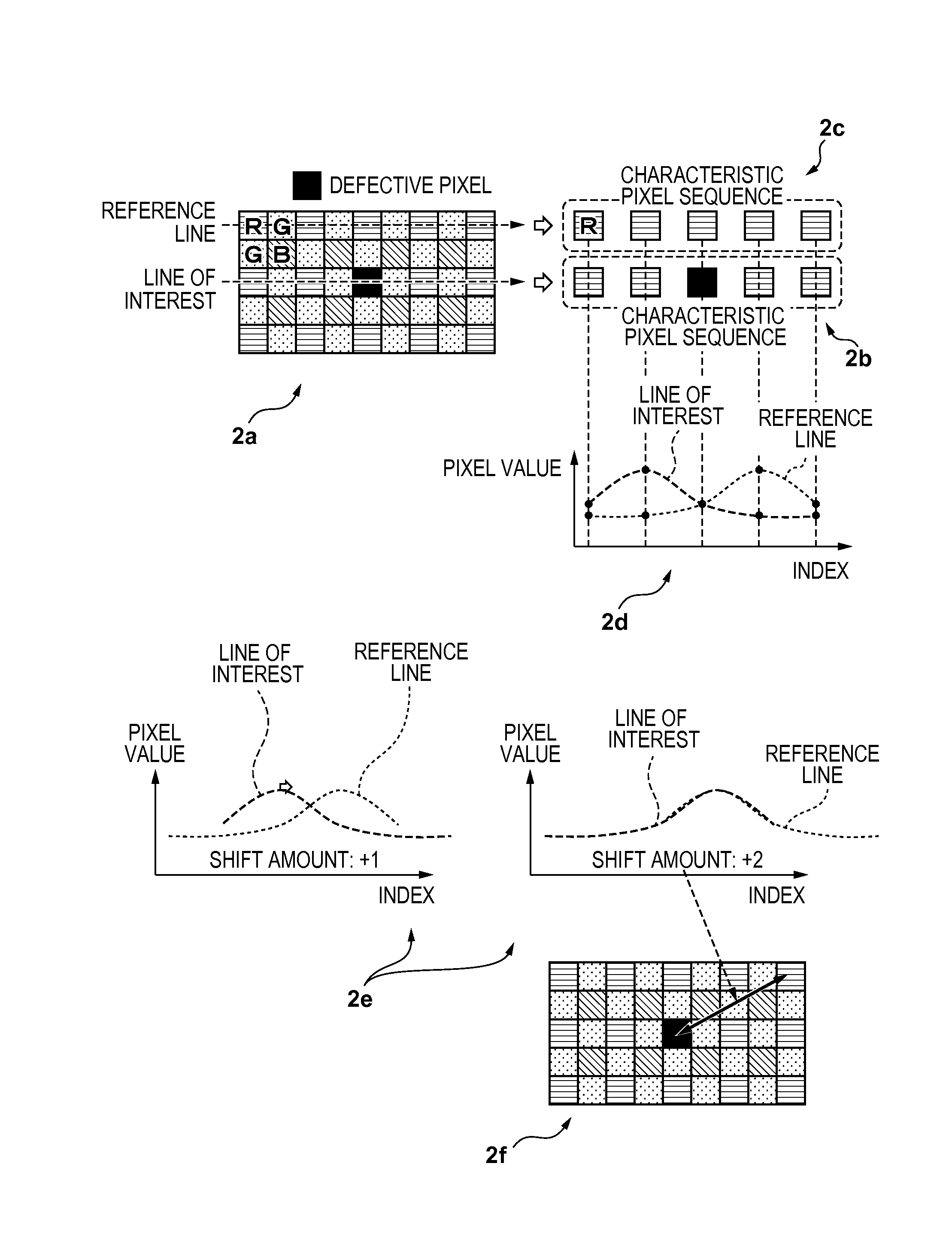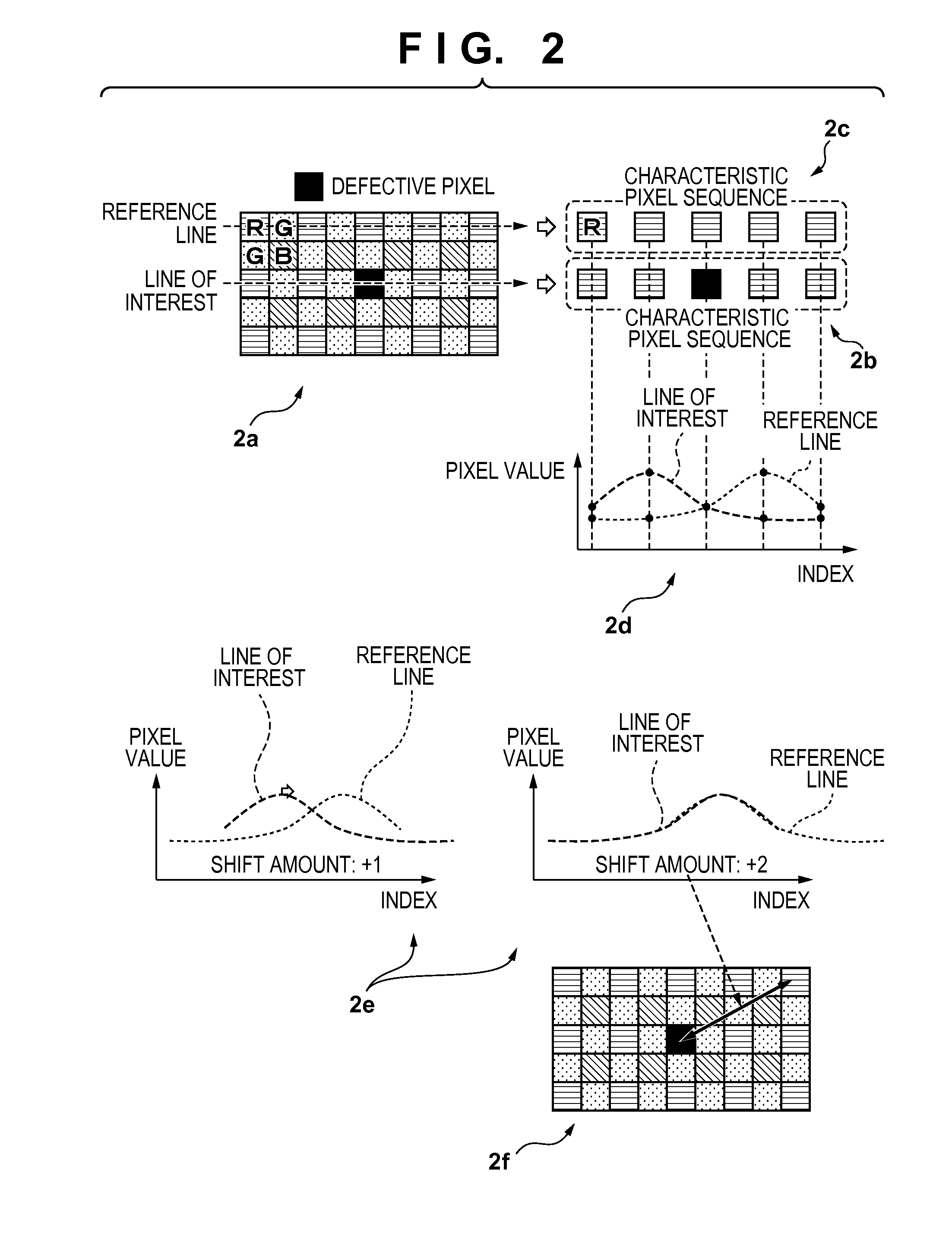Image processing apparatus and method for controlling image processing apparatus
a technology of image processing apparatus and image sensor, which is applied in the direction of color signal processing circuit, color television details, television system, etc., can solve the problems of defective pixel, defective pixel, erroneous correction, etc., and achieve the effect of correcting the defective pixel
- Summary
- Abstract
- Description
- Claims
- Application Information
AI Technical Summary
Benefits of technology
Problems solved by technology
Method used
Image
Examples
first embodiment
[0030]FIG. 1A is a block diagram showing an exemplary functional configuration of an image capture apparatus (or image processing apparatus) 100, which is an exemplary image processing apparatus according to an embodiment of the present invention.
[0031]The image capture apparatus 100 is an apparatus such as a digital camera or a digital video camera that photographs a subject and obtains data (image data) representing an image of the subject. An optical system 101 has a lens, a shutter, and a diaphragm, and forms an optical image of the subject on an image sensor 102, under the control of a CPU 103. The image sensor 102, which may be a CCD or a CMOS image sensor, performs photoelectric conversion on the formed optical image of the subject at each pixel, and converts it into an analog image signal. The CPU 103 converts the analog image signal into a digital image signal (image data), and applies thereto so-called developing processing, such as white balancing adjustment and color int...
second embodiment
[0065]The first embodiment has described the correction method in the case where the defective pixel is a pixel of a color that appears once in each repetition unit of the color filter, such as an R pixel or a B pixel in a Bayer array. The present embodiment relates to a correction method in the case where the defective pixel is a pixel that appears in each pixel line, such as a G pixel in a Bayer array.
[0066]In the case where an R pixel or a B pixel in a Bayer array is a defective pixel, since the repetition unit is constituted by two pixels, a pixel of the same color as the defective pixel does not exist in an adjoining pixel line and is located at a position separated from the defective pixel by at least two pixels, and therefore the reference line is set on a pixel line separated from the line of interest by two pixels. However, for example, if a G pixel is a defective pixel as shown in part 6a of FIG. 6, a pixel of the same color as the defective pixel exists on an adjoining pi...
third embodiment
[0070]The first and second embodiments have described the correction method in the case where the defective pixel is isolated. The present embodiment will describe a correction method in the case where defective pixels of the same color successively exist. Such defective pixels occur due to manufacturing tolerance or aged deterioration, as well as in the case where pixels for focus detection are arranged in the image sensor as shown in part 7a of FIG. 7. Since the focus detection pixels generate a signal for performing focus detection in a phase difference detection method, their range of light reception is narrower than usual pixels, or the color filter is not provided therein, and consequently an obtained pixel value is different from that of usual pixels. Accordingly, correction needs to be performed by considering these focus detection pixels to be successive defective pixels of the same color, as shown in part 7b of FIG. 7.
[0071]Assuming that the line of interest is in the hori...
PUM
 Login to View More
Login to View More Abstract
Description
Claims
Application Information
 Login to View More
Login to View More - R&D
- Intellectual Property
- Life Sciences
- Materials
- Tech Scout
- Unparalleled Data Quality
- Higher Quality Content
- 60% Fewer Hallucinations
Browse by: Latest US Patents, China's latest patents, Technical Efficacy Thesaurus, Application Domain, Technology Topic, Popular Technical Reports.
© 2025 PatSnap. All rights reserved.Legal|Privacy policy|Modern Slavery Act Transparency Statement|Sitemap|About US| Contact US: help@patsnap.com



